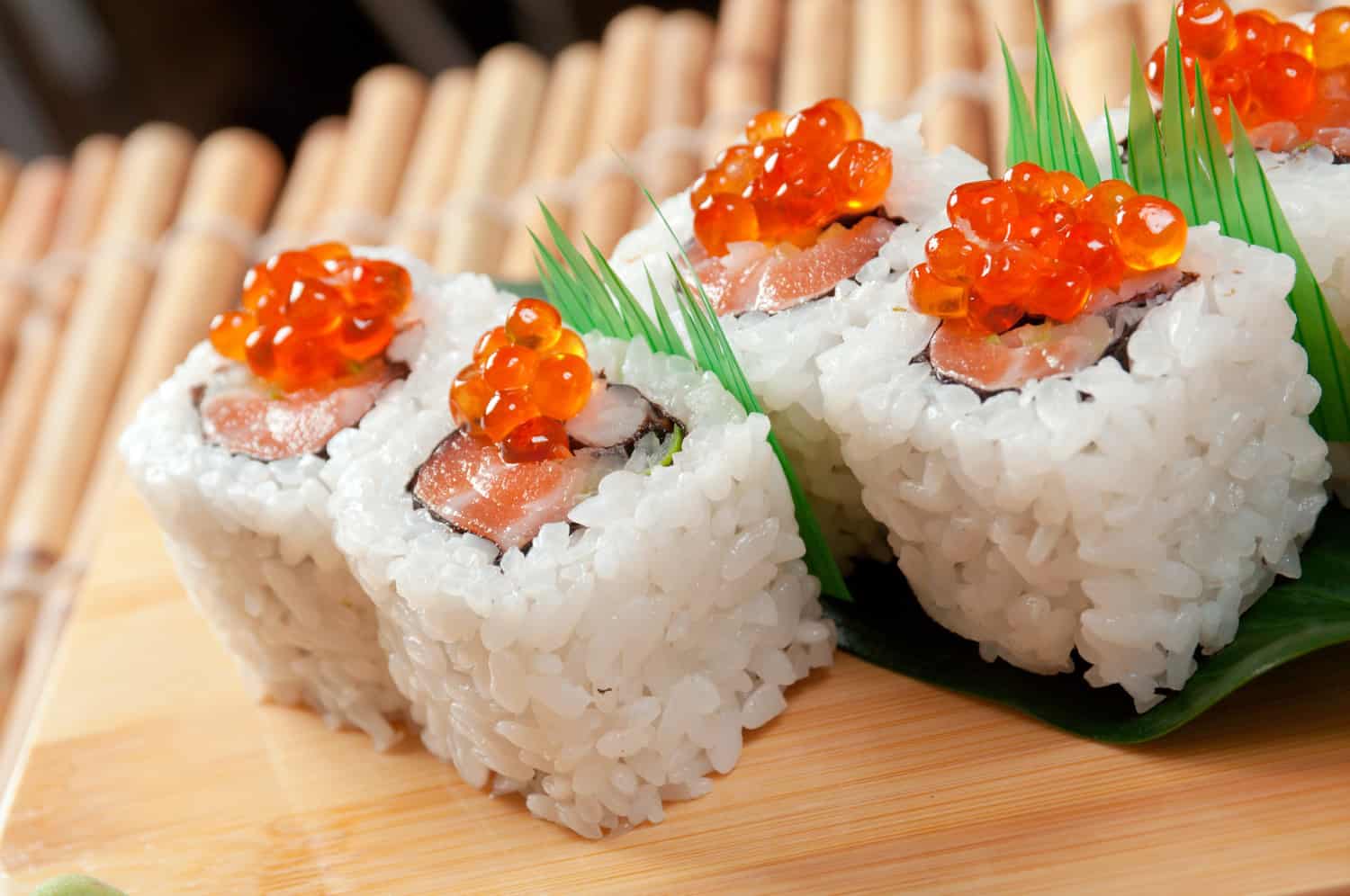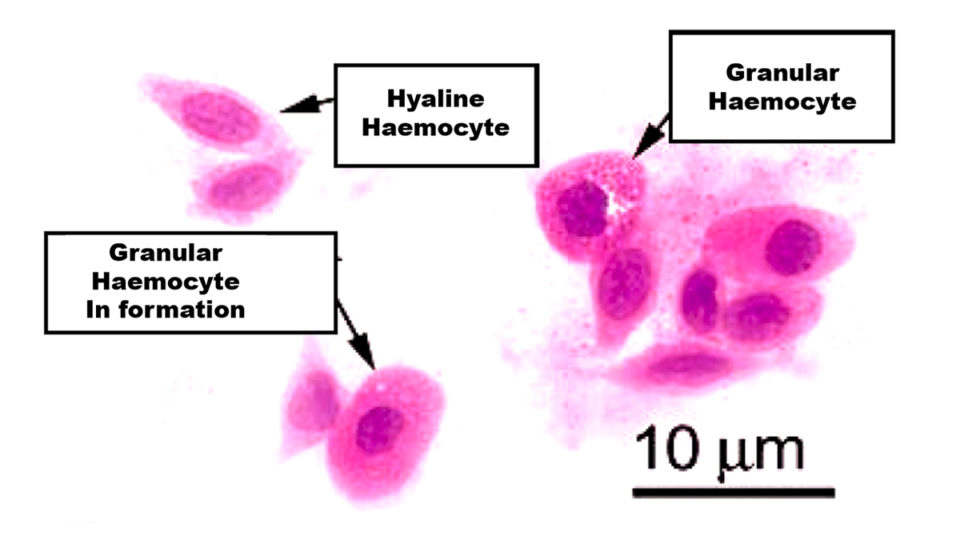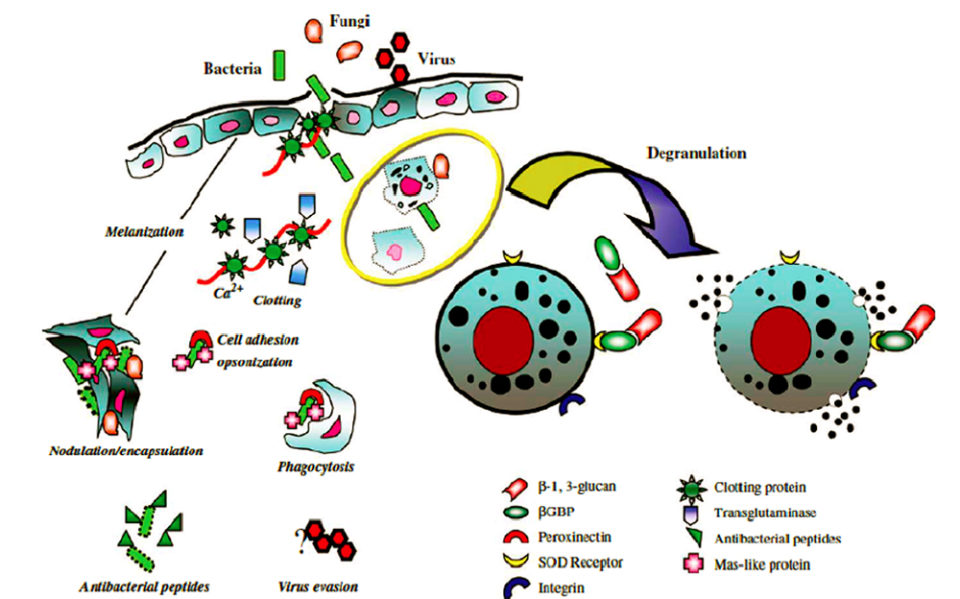As a seafood lover I used to wonder if shrimp actually bleed when they are cooked. That reddish liquid I see when I grill shrimp certainly looks like blood! But it turns out that shrimp circulatory system is quite different from us humans and other vertebrates. Shrimp don’t actually have blood flowing through their bodies like we do.
In this article we’ll explore shrimp anatomy explain what hemolymph is, and understand why shrimp don’t really bleed despite that red color we sometimes see. I’ll also bust some common myths about shrimp blood and share some fascinating shrimp facts! Let’s get started.
Shrimp Have Hemolymph, Not Blood
The first thing to know is that unlike fish shrimp are not vertebrates – they are arthropods. Shrimps have an open circulatory system and use a fluid called hemolymph to distribute nutrients and oxygen.
Hemolymph is composed of:
-
Plasma – makes up 90-95% of hemolymph. Contains water, salts, sugars and other dissolved substances.
-
Hemocytes – blood cells that make up 5-10% of hemolymph. Involved in immunity and clotting.
So in short, hemolymph is not blood! It has some similar functions, but lacks the red blood cells and closed vascular system we see in vertebrate blood.
Hemolymph Flows Freely in the Shrimp Body
In vertebrates like humans, blood flows through a closed network of blood vessels and capillaries. But in shrimp, hemolymph simply sloshes around freely within their body cavity and directly bathes their internal organs.
There is no enclosed system of veins and arteries. Their simple heart pumps hemolymph into the body cavity where it provides nutrients and oxygen to tissues before reentering the heart.
Hemolymph Appears Blue or Clear, Not Red
Here’s another key difference – shrimp hemolymph is not red like vertebrate blood. Since it lacks respiratory pigments like hemoglobin, hemolymph is usually clear or light blue in color. The blue comes from hemocyanin protein which contains copper instead of iron to transport oxygen.
So actual shrimp hemolymph or “blood” inside their bodies does not have a red color.
Why Does Cooked Shrimp Appear Red?
So when we see that reddish fluid come out of a cooked shrimp, it’s not really blood or hemolymph. The red color mainly comes from carotenoid pigments in the shrimp flesh that denature and leach out during cooking. The hepatopancreas organ can also contribute to the red fluid.
The clear hemolymph simply does not turn that bright red when shrimp are cooked. So rest assured – cooked shrimp do not actually bleed!
Do Shrimps Bleed When Injured?
While they don’t have true blood, shrimp do face bleeding issues when their shell is cracked or damaged. Since hemolymph flows freely inside their body, it leaks out continuously when their exoskeleton is breached.
This can be fatal for a shrimp since their hemolymph lacks effective clotting factors. A shrimp can bleed to death quite fast once it starts losing hemolymph through a laceration or crack in its shell.
Hemolymph Has a Key Role in Immunity
Hemocytes in the hemolymph are the main defense against pathogens for a shrimp. They phagocytose invaders, encapsulate large foreign bodies, and initiate clotting reactions. Hemolymph delivers these defensive cells throughout the body.
However, hemolymph itself lacks the complex antibodies found in vertebrate blood. So shrimp immunity relies more on cellular responses.
Oxygen Transport Ability of Hemolymph
While hemolymph does transport some oxygen thanks to hemocyanin proteins, it is far less efficient than the hemoglobin-rich red blood cells in vertebrates. This is why shrimps need a constant flow of water over their gills – to provide enough oxygen to their tissues.
Can Shrimp Hemolymph Transmit Diseases?
Pathogenic bacteria like Vibrio can sometimes enter shrimp hemolymph and cause septicemia. This leads to shrimp diseases that affect production in aquaculture facilities.
Once a shrimp is infected internally, the freely flowing hemolymph rapidly spreads the pathogens throughout their body. So hemolymph plays a key role in disease transmission within shrimp populations.
Mosquitos Can Feed On Shrimp Hemolymph
Surprisingly, mosquitos and some other insects can insert their needle-like mouthparts through a shrimp’s shell and suck up hemolymph as nourishment! The shrimp hemolymph provides protein, minerals and other nutrients to support mosquito egg production.
Unique Composition of Crab Hemolymph
Crabs are also arthropods that utilize hemolymph instead of blood. But crab hemolymph has some unique features:
-
It appears yellow, not blue. The yellow color comes from carotenoid pigments like astaxanthin.
-
It can have fairly large blood cell aggregates that appear as particles or granules floating in the fluid.
-
Clotting mechanisms rely more on cellular coagulation than plasma protein reactions.
So while crab and shrimp hemolymph share some commonalities, there are also key differences between the two.
Key Takeaways on Shrimp Hemolymph and Bleeding
-
Shrimps utilize hemolymph for circulation, not blood. It contains plasma and hemocytes.
-
Hemolymph appears clear or blue, unlike the red blood in vertebrates.
-
It flows freely within the shrimp’s body cavity, not restricted vessels.
-
Cooked shrimp leak red fluid from carotenoid pigments, not actual blood.
-
Hemolymph lacks effective clotting factors, so shrimps are prone to bleeding out.
-
Oxygen carrying capacity is lower compared to vertebrate red blood cells.
-
Shrimps can transmit diseases via infected hemolymph.
-
Insects like mosquitos can feed on shrimp hemolymph for nutrients!

Hemocytes: Cells to fight pathogens
When microbes or foreign particles get into the tissues of white shrimp or any other invertebrate animal, their immune systems work to keep them from getting sick. This immunological reaction is manifested through cellular mechanisms where hemocytes play a very important role.
The cells in shrimp blood, called hemolymph, are called hemocytes. The plasma, which is made up of different humoral factors (major molecules in the circulatory system), makes up the liquid part. The immune system’s cellular and humoral responses work together to make defenses. These include the clotting of blood; melanization by the prophenoloxidase (ProPO) system, which is an important natural defense system in invertebrates; the use of lectins to find foreign substances; and antibacterial, antifungal, and antiviral peptide systems that work with interference RNA and a pattern of recognition proteins. In addition, reactive oxygen forms are made, as well as phagocytosis and encapsulation, the last two of which are mostly done by hemocytes (Iwanaga
Hemocytes (Fig. 1) are produced in the hematopoietic tissues of shrimp, and there are two types:
- Pathogens or foreign particles are taken in by hyaline hemocytes through a process called phagocytosis. They also intervene in the coagulation process.
- granulocytes or granular hemocytes that kill invading elements by encasing them, forming nodules, and killing cells. They also intervene in melanization (ProPO system).

When the shrimp gets hurt, the hyaline hemocytes start the coagulation process, which is a very important defense mechanism that keeps the shrimp from losing too much fluid and stops microbes from getting in. Then, the granular hemocytes release protective enzymes that kill the microbes. Other granulocytes then get rid of them by phagocytosis and/or encapsulation. Once the microbes are trapped or eaten, the granular hemocytes lead the melanization process, which stops them from moving and gets them ready to be pushed out by the cuticular excretion or the next molting cycle.
The hemocyte defense system also raises the number of cells with free radicals and encourages hyaline hemocytes to change into granular hemocytes. This speeds up the degranulation process, which gets rid of pathogens more quickly (Fig. 2).

Water quality and its effect on hemocyte production
As we will see below, the physical and chemical properties of water, like temperature, oxygen, pH, and salinity, have a lot to do with how many hemocytes are made in response to disease.
SHRIMP Made Me BLEED
Do shrimp have blood?
While shrimp have a circulatory system that serves a similar purpose to blood in transporting nutrients and oxygen throughout their body, their fluid is called hemolymph. Unlike human blood, it does not contain red blood cells or hemoglobin. Additionally, hemolymph does not have a set color and can vary depending on a shrimp’s diet and environment.
What is shrimp hemolymph?
This protein, which contains copper, helps transport oxygen throughout the shrimp’s body. Hemocyanin gives hemolymph a blue-green color when oxygenated, which can differ from the bright red color we associate with oxygenated human blood. Overall, the unique qualities of shrimp hemolymph make it a fascinating area of study for scientists.
Can you eat shrimp steamed?
Shrimp has less than a tenth of a gram of saturated fat in 3 ounces. Plus, there’s almost no trans fat in shrimp. The healthy fats in shrimp, like omega-3 fatty acids, can lower your blood pressure and odds of getting heart disease and stroke. You can eat shrimp steamed, boiled, barbecued, fried, sautéed, poached, or baked.
Are brown shrimp boiled?
The brown shrimp you find at the fishmonger have very likely been boiled already because this variety is ideally cooked while the shrimp are still alive. Otherwise, their flesh would end up mushy and off-putting. What are pink shrimp? Pink shrimp is also referred to as spotted shrimp.
